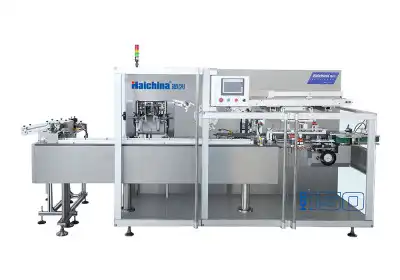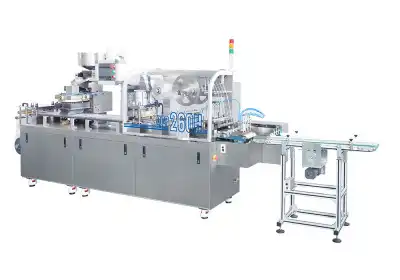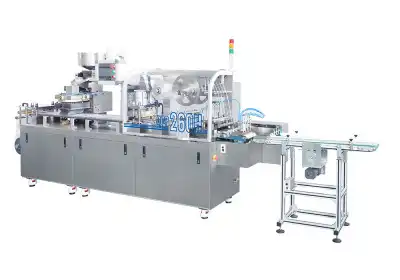Understanding the Basics: Vertical and Horizontal Cartoning Machines
Defining Vertical Cartoning Machines
Vertical cartoning machines are designed with a top-down loading mechanism. Products are inserted into cartons from above, utilizing gravity to assist in the packaging process. These machines are particularly adept at handling products that require gentle handling or have unique shapes that may be challenging to package horizontally.
Exploring Horizontal Cartoning Machines
Horizontal cartoners operate on a linear plane, with products and cartons moving along a horizontal path. This configuration allows for high-speed operations and is often preferred for products that are stable and uniform in shape. Horizontal machines can typically handle a wider variety of carton sizes and styles compared to their vertical counterparts.
Key Differences in Operation and Application
The primary distinction between vertical and horizontal cartoners lies in their product loading mechanism and the types of products they can efficiently package. Vertical machines are often slower but more gentle, while horizontal machines offer higher speeds but may be less suitable for delicate items. Understanding these differences is crucial in determining which type aligns best with your specific production needs.
Factors to Consider When Choosing Between Vertical and Horizontal Cartoners
Product Characteristics and Packaging Requirements
The nature of your product plays a pivotal role in selecting the appropriate cartoning machine. Consider factors such as product fragility, shape, size, and weight. Vertical cartoners are often preferred for items like pouches, bags, or irregularly shaped products that benefit from top-down loading. Horizontal machines, however, excel with rigid, stable products that can withstand the forces of horizontal movement during packaging.
Production Speed and Volume Needs
Assess your production line's speed requirements and overall volume. Horizontal cartoning machines generally offer higher speeds, making them suitable for high-volume production environments. Vertical cartoners, while typically slower, provide more flexibility in handling diverse product types. Balance your need for speed with the variety of products you need to package to make an informed decision.
Available Floor Space and Facility Layout
Consider the physical constraints of your production facility. Vertical cartoners often have a smaller footprint, making them ideal for operations with limited floor space. Horizontal machines, while potentially requiring more space, offer more flexibility in terms of integration with other packaging equipment. Evaluate your facility's layout and available space to determine which configuration can be seamlessly integrated into your existing production line.
Maximizing Efficiency: Integrating Cartoning Machines into Your Production Line
Optimizing Workflow with Vertical Cartoners
Integrating vertical cartoning machines into your production line requires careful consideration of product flow and upstream processes. These machines work well in conjunction with gravity-fed systems or vertical conveyors. To maximize efficiency, ensure that your product handling and infeed systems are compatible with the top-down loading mechanism of vertical cartoners. This may involve implementing accumulation tables or synchronized feeding systems to maintain a steady product flow.
Streamlining Operations with Horizontal Cartoners
Horizontal cartoning machines offer great potential for streamlined, high-speed operations. To fully leverage their capabilities, focus on optimizing product infeed and carton erection processes. Consider implementing automatic carton feeders and product collation systems to maintain a consistent flow. Horizontal cartoners also provide opportunities for easy integration with downstream processes such as case packing or palletizing, creating a seamless end-of-line packaging solution.
Enhancing Flexibility with Hybrid Solutions
For production lines that handle a diverse range of products, consider exploring hybrid cartoning solutions. Some manufacturers offer machines that can be quickly converted between vertical and horizontal configurations, providing the flexibility to adapt to different packaging needs. While potentially more costly upfront, these versatile solutions can offer long-term benefits in terms of adaptability and future-proofing your packaging operations.
Conclusion
Choosing between vertical and horizontal cartoning machines is a critical decision that can significantly impact your production line's efficiency and product quality. By carefully considering factors such as product characteristics, production speed requirements, and facility constraints, you can select the optimal cartoning solution for your unique needs. Remember that the right choice extends beyond the machine itself - successful integration into your production line is key to maximizing the benefits of your cartoning equipment. Whether you opt for the gentle handling of a vertical cartoner or the high-speed capabilities of a horizontal machine, investing in quality packaging equipment from reputable manufacturers will ensure long-term success in your packaging operations.
FAQs
Can vertical cartoning machines handle high-speed production?
While vertical cartoners are generally slower than horizontal ones, some advanced models can achieve competitive speeds for certain product types.
Are horizontal cartoners suitable for fragile products?
With proper product handling systems and gentle infeed mechanisms, horizontal cartoners can be adapted to handle moderately fragile products.
How do I determine the right cartoning machine size for my production line?
Consider your current and projected production volumes, product dimensions, and carton sizes to select a machine with appropriate capacity and flexibility.
Expert Cartoning Solutions | Haichina
At Zhejiang Haizhong Machinery Co., Ltd., we're a trusted cartoning machine supplier specializing in top-tier cartoning solutions tailored to your unique production needs. Our expert team can guide you in selecting the ideal vertical or horizontal cartoning machine, ensuring seamless integration with your existing production line. With our commitment to innovation, quality, and customer satisfaction, we offer fully customizable packaging solutions that meet CE, cGMP, and ISO 9001 standards. Experience the Haichina difference - contact our cartoning machine factory at [email protected] to elevate your packaging efficiency today.
References
Johnson, M. (2022). Advancements in Cartoning Technology: A Comprehensive Review. Packaging Science Quarterly, 18(3), 45-62.
Smith, A., & Brown, B. (2021). Comparative Analysis of Vertical and Horizontal Cartoning Machines in Pharmaceutical Packaging. Journal of Industrial Packaging, 29(2), 112-128.
Lee, S. (2023). Optimizing Production Line Efficiency: The Role of Cartoning Machines. International Journal of Manufacturing Engineering, 41(4), 301-315.
García, R., & Rodríguez, C. (2022). Energy Efficiency in Packaging Operations: A Case Study of Vertical vs Horizontal Cartoners. Sustainable Manufacturing Review, 15(1), 78-93.
Wilson, D. (2021). Flexibility in Packaging: The Rise of Hybrid Cartoning Solutions. Packaging Technology Today, 33(6), 22-35.
Zhang, L., & Liu, Y. (2023). Industry 4.0 and Smart Cartoning Machines: Trends and Future Prospects. Automation in Packaging, 27(3), 189-204.





